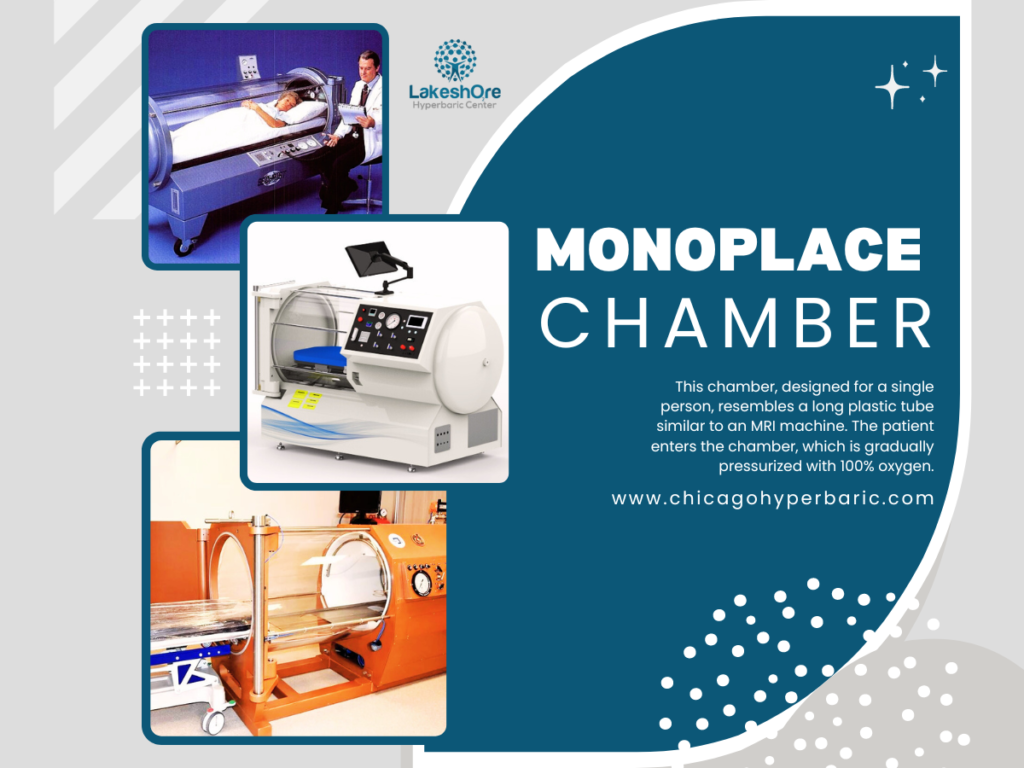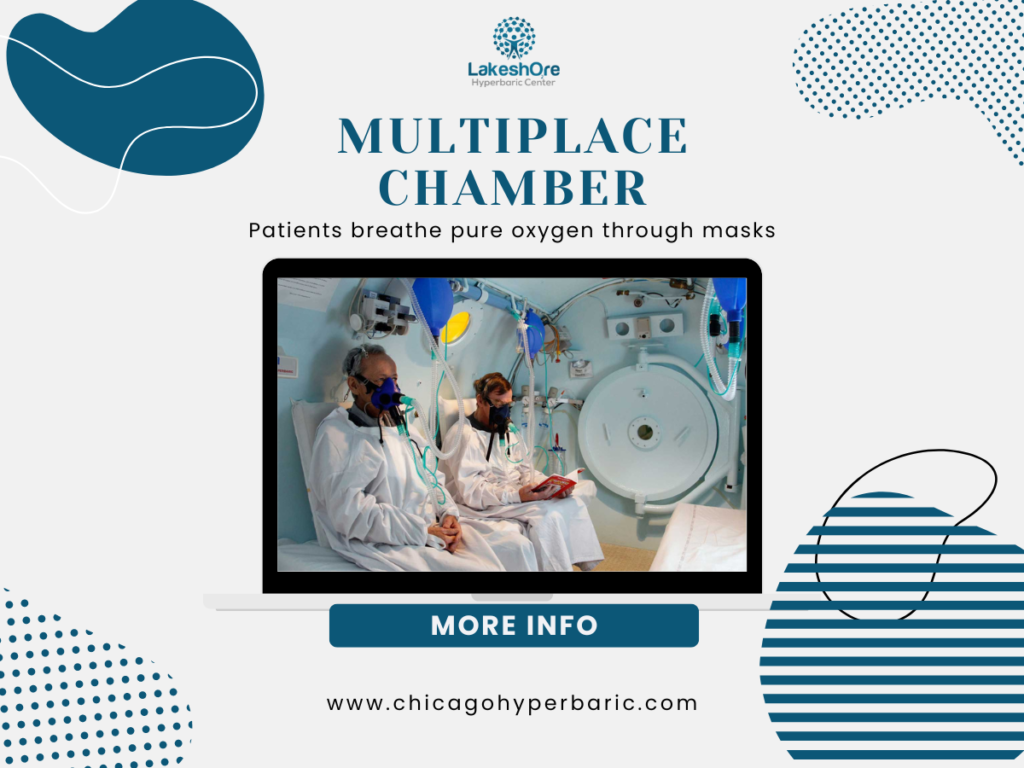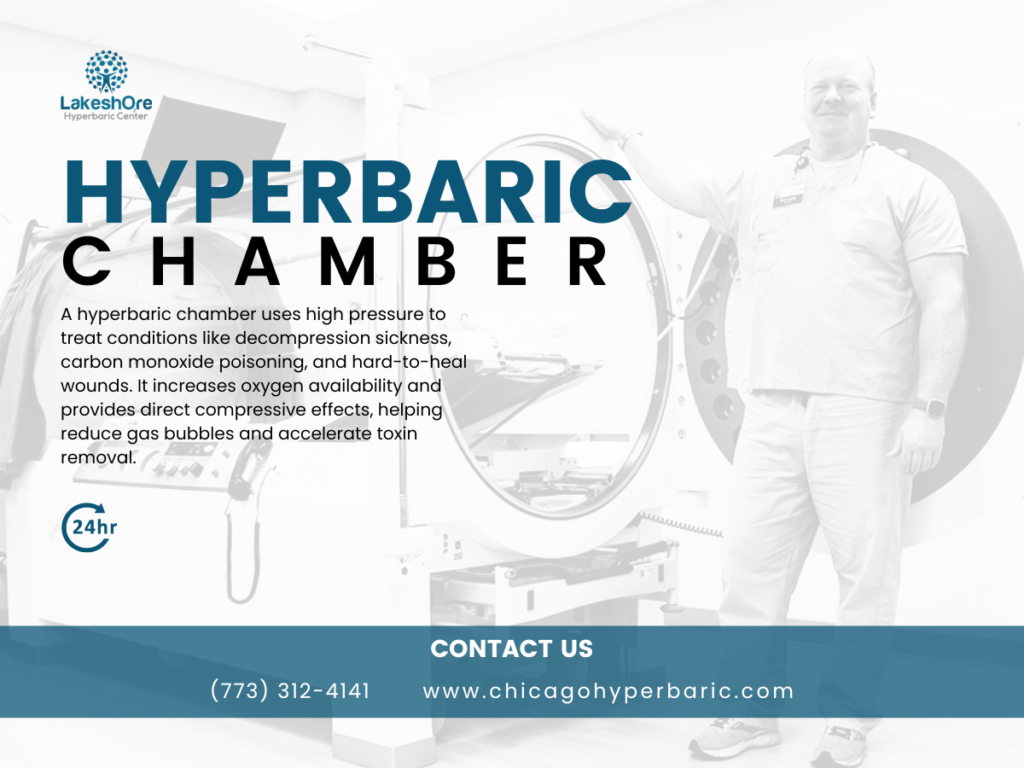A hyperbaric chamber is a unique environment that treats particular risks for patients, especially those needing intensive care. To maintain patient safety and health, it necessitates medical devices that are specially designed and approved for use in such conditions.
This guide is compiled by our healthcare experts as a resource for you so you can have a clear understanding of our main tool, types of Hyperbaric Chambers.
Read More: History of HBOT
Types of Hyperbaric Chambers
Hyperbaric oxygen therapy uses two types of chambers

Monoplace Chamber
This chamber, designed for a single person, resembles a long plastic tube similar to an MRI machine. The patient enters the chamber, which is gradually pressurized with 100% oxygen.

Multiplace Chamber
This chamber, or room, can accommodate two or more people simultaneously. The treatment process is similar, but the key difference is that patients breathe pure oxygen through masks or hoods. Additionally, a technician may be present in the chamber during the treatment.
Mild Hyperbaric Chambers

Mild hyperbaric chambers, also known as “soft” hyperbaric chambers, are constructed from polyurethane or canvas material.
These chambers operate at much lower pressures and compress room air, which contains approximately 21% oxygen, unlike traditional medical-grade hyperbaric chambers that use 100% medical-grade oxygen. These soft chambers are not intended for use with oxygen.
Despite these significant differences, “soft chambers” are often marketed as being as effective as medical-grade chambers for various conditions, even though these claims lack sufficient study or proof.

Hyperbaric Chamber – Working Explained
A hyperbaric chamber is a sealed environment where high pressure is used primarily to treat conditions like decompression sickness, gas embolism, carbon monoxide poisoning, gas gangrene from anaerobic bacterial infections, tissue injuries from cancer radiation therapy, and hard-to-heal wounds.
The use of experimental compression chambers began around 1860. At its simplest, a hyperbaric chamber is a cylindrical metal or acrylic tube, large enough to accommodate one or more people, with a sealable access hatch that withstands high pressure.
Air, other breathing mixtures, or oxygen is pumped in by a compressor or from pressurized tanks. Medical treatments typically use pressures ranging from 1.5 to 3 times the normal atmospheric pressure.
The therapeutic benefits of a high-pressure environment stem from its direct compressive effects and the increased availability of oxygen to the body due to higher partial pressure.
For instance, in treating decompression sickness, the high pressure reduces the size of gas bubbles in the tissues. In cases of carbon monoxide poisoning, the higher oxygen levels accelerate the removal of carbon monoxide from the blood and minimize cell and tissue damage.
Conclusion
To benefit from hyperbaric oxygen therapy, multiple sessions are typically required, with the number of treatments depending on the specific medical condition. For example, carbon monoxide poisoning might be resolved in as few as three sessions, whereas non healing wounds could necessitate 40 or more treatments.
Hyperbaric oxygen therapy is included as part of a comprehensive treatment plan for approved medical conditions. Reach out to our experts at Lakeshore Hyperbaric Center in Chicago.
Read More: Benefits of HBOT
Read More: How Does HBOT works?
Read More: How HBOT for Viral Infections Helps in Recovery?
Read More: HBOT for Depression: The Impact of HBOT on Mental Health
Read More: HBOT for Cancer Patients: A Supportive Therapy for Cancer
Read More: Using HBOT for Autism Spectrum Disorder
Read More: Hyperbaric Oxygen Therapy for Severe Burns: Burn Healing With HBOT
Read More: Hyperbaric Oxygen Therapy HBOT for Anti-Aging and Skin Health
Read More: The Therapeutic Potential of HBOT for PTSD Patients




